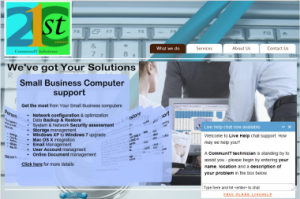Archive for the ‘Small Business Tips’ Category
KikScore SmallBiz Interviews’ Greatest Hits & Top Strategy Tips for Entrepreneurs: Part I
Thursday, June 2nd, 2011 KikScore has had the pleasure of interviewing many small business owners over the past few years, asking these entrepreneurs about all areas of their businesses and what has spurred their growth, while also throwing in light-hearted pop-culture related questions.
KikScore has had the pleasure of interviewing many small business owners over the past few years, asking these entrepreneurs about all areas of their businesses and what has spurred their growth, while also throwing in light-hearted pop-culture related questions.
In Part I of this two-part Greatest Hits series, I will highlight the top five lessons learned from these interviews with regards to establishing a successful small business. Many of these innovative and impressive business owners shared related advice and acknowledged similar trends in the e-commerce field. So without further ado, here are the Top 5 Things You Should Do When Starting a Small Business:
5. Keep your website simple and easy to navigate
– “My advice to people about an online presence is to keep it simple and clean and VERY easy to navigate AND to have a Content Management System (CMS) so you can update your site yourself.” (Whitney Zimet, owner of I Am The Maven)
– “Spend the money to get a good website. We went with a woman who did “websites for small businesses” but she really wasn’t experienced in sites with a retail/shopping cart component. So, the site looked okay on the surface, but I later learned that she had used very amateur programming on the back end, making it enormously difficult for another web programmer to make changes. This also limited our SEO.” (Kimberley Stewart from OnBoard Outfitters)
4. Have a flexible business model, being able to adjust quickly to a changing environment
– “Never think what you’re doing today is what you’ll be doing 10 years from today. Markets change and products evolve. Learn to adapt quickly.” (Michael Alter, President of SurePayroll)
– “Be willing to change. Always look at your business in a new way.” (Rick Shoop, owner of Oregon Seafoods)
3. Utilize social media outlets
-“Another trend is tapping into more social media platforms and applications. Combining sites such as Facebook with applications developed by Wildfire you are very quickly able to promote coupons, contests, and/or sweepstakes.” (Brian Esposito, CEO of Avenue You Beauty Store)
– “Take full advantage of all social network and free Internet advertising. 50% of our sales come from social networking sites, the chain reaction you can achieve from them is priceless.” (S.J. Trotter, owner of www.exclusiveclothingretail.com)
2. Establish a safe and secure online presence
– “Apart from that, customer’s satisfaction is also of utmost importance to online business. Exceptional customer service results in greater customer retention, which in turn results in higher profitability. We therefore strongly believe that customer loyalty is one of the most crucial and major contributors to sustainable profit growth. Over 60% of our profits are from customers who came back and made their purchases more than once within the 3-month period.” (Margaret Chan, owner of Cherry’s Brandname Gallery)
– “In 2010, much of our energy will be focused on improving the website and making sure our customers have confidence in shopping with us. KikScore is a great tool that helps us demonstrate that trust online.” (Madalyn Duerr, owner of Tufted Topper)
1. Keep the long-term goal in perspective and never give up
– “Most importantly: Don’t let anyone tell you no. You are your own best advocate and no one is going to do the work for you. Don’t let obstacles prevent your idea from ever being tested – you have to go out and do it.” (Andrew Shelton from Trackpack Coolers)
– “In my opinion the most important ingredient in a business’s success is the passion of the person or people running it.” (Mark Sarpa, CEO of Frecklebox)
– “Stay far from timid, Only make moves when your heart’s in it, And live the phrase ‘sky’s the limit'” (The Notorious B.I.G.)




 As cybercriminals become more advanced and efficient, all businesses must recognize and prepare for the imminent threats of online hackers. The issue of cyber-attacks has made its way to the Senate, debating the amount of power the president should have in dealing with cybercrimes (Full story
As cybercriminals become more advanced and efficient, all businesses must recognize and prepare for the imminent threats of online hackers. The issue of cyber-attacks has made its way to the Senate, debating the amount of power the president should have in dealing with cybercrimes (Full story 









